Philadelphia Flower Show Goes Green for Blue: Features Functional

The oldest and largest flower show in the world, the Philadelphia Flower Show, is spotlighting the role of gardens and landscapes (green infrastructure) in water resources and water quality in its 189th year. This year’s theme, “Wonders of Water,” will celebrate the beauty and life-sustaining interplay of horticulture and water.
Sponsored by the Pennsylvania Horticultural Society (PHS), the event draws more than 250,000 visitors annually to view and interact with extensive garden and plant displays. New this year, PHS is partnering with The William Penn Foundation (WPF) for the one-day Philadelphia Water Summit on March 7. Leading environmental and industry experts will talk about water-quality issues and solutions as part of a larger mission to help keep the region's surface waters clean.
The WPF provided grant sponsorship to the PHS for a demonstration of how plant systems cleanse and sustain the Delaware River Watershed. The Windows on the Watershed display features vignettes of plant communities in habitat ecosystems that help to cleanse water.
A new attraction, “America’s Backyard,” will offer smart ideas for outdoor living and conservation tips for the home garden. Guests can create their own mini-water garden in the “Make & Take” workshop and interact with the delicate inhabitants of “Butterflies Live.”
Featured functional plants in Windows on the Watershed:
Wilderness Forest Heroes
-
Osmunda cinnamomea. Roots hold the soil in place.
-
Onoclea sensibilis. Its presence shows that a wetland is healthy.
-
Acer saccharum. Roots move water from deep in the soil profile to higher, drier layers, thus irrigating itself and its understory neighbors.
Wet Meadow Heroes
-
Thelypteris palustris. Its presence indicates transition to fields or forests, where it filters water flowing out of the meadow.
-
Carex stricta. A foundational plant that helps to build soil.
-
Eutrochium maculatum. A nectar-rich pollinator magnet.
Suburban and Urban Heroes
-
Rhododendron maximum. The dense understory reduces erosion and helps to filter water before it flows to surface waters.
-
Equisetum hyemale. They filter water runoff by storing pollutants in their tough stems.
-
Rudbeckia triloba. Nectar rich flowers for pollinators and seeds for songbirds.
-
Pontederia cordata. The hollow stems help to aerate the thick mud of the marsh.
-
Betula nigra. Roots help to strengthen the soft, moist soil on the riverbank.
Tidal Marsh Heroes
-
Spartina alterniflora. Collects sediment, thus slowly growing the shoreline.
-
Juncus inflexus. Provides structure at the edge of the marsh, trapping sediments and building soil.
_________________________________________________________________________________

Do Butterfly Gardens Actually Help Pollinators? Yes!
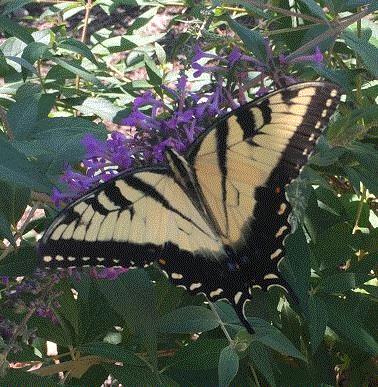
Butterflies use pollinator gardens, according to work from the University of Georgia (UGA). While they visit those spaces designed to attract them, there’s also a downside—pollinator gardens expose caterpillars to increased threats from predators or disease.
The UGA study was designed to attract four butterfly species commonly found in the Southeast: Monarch, Queen, Gulf Fritillary and Black Swallowtail.
Each block contained two plots with only native plants and two with only exotic plants, including food plants for caterpillars specific to each of the target species. Plots also differed in the intensity of maintenance (regular versus minimal weeding).
“Within two months of planting the experimental gardens, they were colonized by a high diversity of butterflies,” said Ania Majewska, UGA. Twenty-two species were documented and the four target species reproduced within the garden plots, leading to an increase in butterfly abundance over time.
The team expected that butterflies would prefer native plots and that caterpillars would survive better in the low-maintenance plots. That was not, however, what they found.
“We were surprised that the two main garden characteristics we focused on the choice of native vs. exotic plants and weeding intensity did not have stronger effects on the use of gardens by butterflies.”
Instead, the number of plants actively flowering had the greatest influence on butterfly abundance and diversity.
Two species—Monarchs and Gulf Fritillaries—were somewhat more abundant in the exotic plots, possibly because their exotic host plants are showier and bloom longer than their native counterparts. Gulf Fritillaries were also more abundant in the more heavily weeded plots. Do weedy gardens offer more hiding places for their predators?
Like most recent work on pollinators and gardens, this work also showed that more study is needed.
“Even though it’s clear that Monarchs were attracted to exotic milkweed plants in the gardens, we are not convinced that is a good thing.” Ania said. “Exotic milkweed plants used in this study differ in many ways from native milkweeds and earlier studies show that they can cause high levels of disease in Monarch populations. We need more information on the rates and causes of butterfly mortality in gardens to better design habitats that are beneficial and will support pollinators.”
—Excerpted from Butterfly gardens offer some hope for pollinators by Beth Gavrilles, University of Georgia press release.
Do characteristics of pollinator-friendly gardens predict the diversity, abundance, and reproduction of butterflies? by Ania A. Majewska, Stuart Sims, Seth J. Wenger, Andrew K. Davis and Sonia Altizer in Insect Conservation and Diversity.
_________________________________________________________________________________

Thinking of Putting Pollinator Habitat in the Middle of City Concrete?
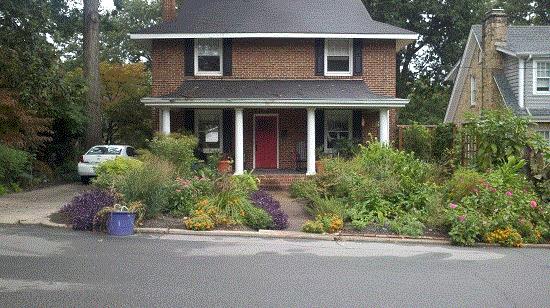
Your editor's garden in the City of Raleigh (Five Points), an eclectic mix of native and introduced species that provide a very wide range of nectar and pollen for native bees and pollinators.
Adding pollinator habitat to every nook and cranny of the city may be well meaning, but not matter for bees. Flowers and habitat placed in the city where it’s surrounded by concrete or asphalt may not foster biodiversity and healthy bee communities based on work at NC State University (NCSU).
If you want diversity of wild bees, put habitat where bee communities don’t get hammered by the urban heat island. Based on studies of 18 residential yards/gardens and parks in Raleigh, North Carolina, an NCSU research team noted that “... even gardens rich with flowers do not have the same bee abundance or diversity as natural areas,” writes Dr. Steven Frank in an NCSU blog post.
“The hottest yards had about a third as many bees as yards just 2C (about 3.6F) cooler,” he wrote. “In addition, hot yards had fewer bees from species that we previously found to be sensitive to heat and more bees from species we found to be heat tolerant [like carpenter bees].”
Floral diversity and abundance did result in larger numbers and diversity of bees compared to yards with less floral resources.
“In other words, simply adding flowers to otherwise hot sites with lots of impervious surface cover is unlikely to restore pollinator communities. To amplify the benefits provided by flowers, you could plant trees to shade driveways and sidewalks, reducing the temperature of a yard. We wouldn’t expect other animals to thrive in poor habitats just by providing them with food. Bee conservation requires habitat restoration.”
—Flowers Aren’t Enough: How Urban Heat Affects Bee Populations by Steven Frank for NC State News.
If you’d like to follow the great work of Steve Frank lab, sign up at EcoIpm.
Wild bee abundance declines with urban warming, regardless of floral density by April L. Hamblin, Elsa Youngsteadt and Steven D. Frank in Urban Ecosystems.
_________________________________________________________________________________

Heat Island Worse in Grid Cities
The arrangement of a city’s streets and buildings plays a crucial role in the local urban heat island effect, according to a new study from the Massachusetts Institute of Technology.
Some cities, such as New York and Chicago, are laid out on a precise grid, like the atoms in a crystal, while others such as Boston or London are arranged more chaotically, like the disordered atoms in a liquid or glass. The researchers found that the “crystalline” cities had a far greater buildup of heat compared to their surroundings than did the “glass-like” ones.
The differences in the heating effect seem to result from the way buildings reradiate heat that can then be reabsorbed by other buildings that face them directly, the team determined.
The effects are significant, says Roland Pellenq, MIT, National Center for Scientific Research senior research scientist, and director of a joint MIT/ CNRS/Aix-Marseille University laboratory called <MSE>2.
The team evaluated all the states individually and found, for example, that in the state of Florida alone urban heat island effects cause an estimated $400 million in excess costs for air conditioning.
“This gives a strategy for urban planners,” he says. While in general it’s simpler to follow a grid pattern, in terms of placing utility lines, sewer and water pipes, and transportation systems, in places where heat can be a serious issue, it can be well worth the extra complications for a less linear layout.
—Excerpted from Urban heat island effects depend on a city’s layout by David Chandler for MIT News.
Role of city texture in urban heat islands at nighttime by J. M. Sobstyl, T. Emig, M. J. Abdolhosseini Qomi, F. -J. Ulm and R. J. -M. Pellenq in Physical Review Letters.
_________________________________________________________________________________

#PlantsDoThat WhereWeLive
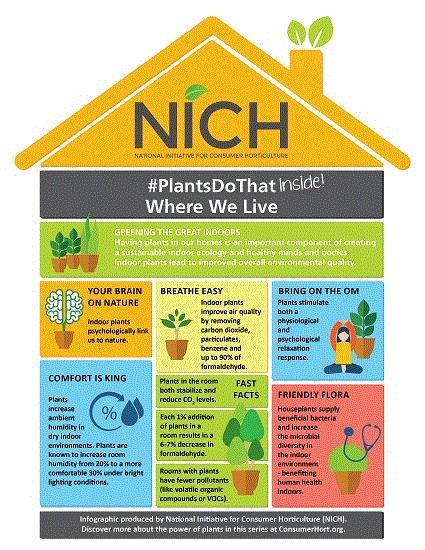
Please indulge me for a moment ... I’m the chair of the National Initiative for Consumer Horticulture (NICH) Economic Committee. We’re the ones putting out great infographics to arm anyone seeking to promote plants for their environmental, health, social and economic benefits with evidence.
Our latest infographic series focusses on the benefits of indoor plants where we live, learn, heal and work. This series of four #PlantsDoThat Inside infographics focus on the multitude of ways indoor plants affect where we live, where we work, where we heal and where we learn. The first to be released this week is #PlantsDoThat Inside WhereWeLive.
The infographic series was developed from a scientific literature review evidence base developed by Dr. Charlie Hall, Ellison Chair, Texas A&M and his students. The series of four brightly colored infographics are designed by Jennifer Gray, AmericanHort and Horticultural Research Institute. They're free to use. One infographic a week will be released and can be downloaded from NICH’s website.
Use them to your ends to build sales, to educate politicians or to excite students. If you’ve got questions about NICH or the infographics, reach out to me at debbie.hamrick@ncfb.org.
_________________________________________________________________________________

Bees and Horticulture
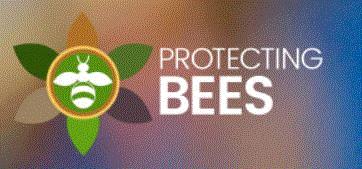
JC Chong, Associate Professor of Entomology at Clemson University, puts together PestTalks, a sister enewsletter from Ball Publishing. His last issue is all about pollinators and ornamental horticulture.
Of great interest is a new website being hosted by Rutgers University, Protecting Bees. The site aggregates the work of a large national team on a National Institute for Food and Agriculture Specialty Crops Research Initiative Grant, “Protecting Pollinators with Economically Feasible and Environmentally Sound Ornamental Horticulture.” Check it out if you’re into habitat and/or landscapes for bees. You’ll spend a few minutes and gain interesting insights. I’m especially excited because one of their objectives is to create an evidence-based compilation of pollinator-attractive plants.
_________________________________________________________________________________
Pycnanthemum muticum: 2018 Plant of the Year
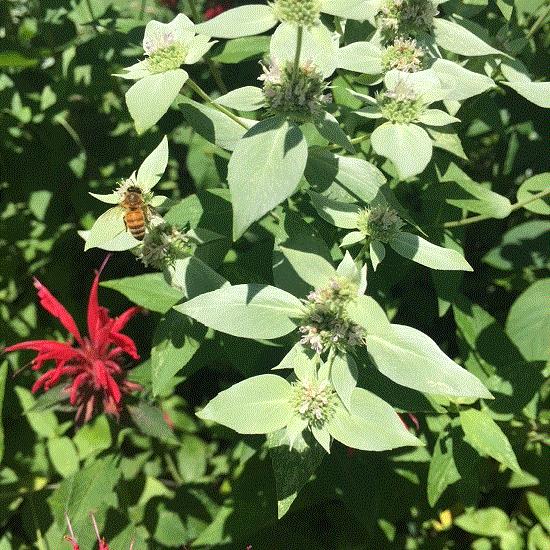
Here’s one more reason to plant more Pycnanthemum muticum. The Garden Club of America selected P. muticum as 2018 Plant of the Year. P. muticum is highly rated as a beneficial insect-attracting plant whenever it’s pitted head-to-head in plant trials. Plants flower late into the fall and are a good source of nectar and pollen. Plants are unattractive to deer.
Caltha palustris (marsh marigold) received Special Recognition and Maianthemum racemosum (false Soloman’s seal) received Honorable Mention. Natives have been spotlighted by the Garden Club of America annually since 1995.
_________________________________________________________________________________
Gallup Reports Americans Dissatisfied with Quality of Environment
For the first time since Gallup's annual Mood of the Nation poll has tracked Americans’ attitude on environmental quality, more people are dissatisfied (52%) than satisfied (45%) with the quality of the environment. It’s the first time the percentage of dissatisfied has gone over 50% in the poll’s 18-year history.
The trend going back to 2001 has been that more Americans have said they're satisfied with the nation's environmental quality. No surprise that Democrats are less satisfied with the quality of the environment, at just 30% satisfied, down from 45% the year before. Sixty percent of Republicans say they're satisfied with the quality of the environment, a consistent trend. Independents come in as 45% satisfied with the quality of the environment.
Gallup interprets the results as “anticipatory." Since Trump administration environmental regulation changes have yet to take effect, Gallup believes the results may reflect concern about significant changes to governmental policies rather than changes that have yet to be experienced.
_________________________________________________________________________________
Events
March 7-8: ELA Conference& Eco-Marketplace (MA)
Join the Ecological Landscape Alliance for their two-day Conference & Eco-Marketplace in Amherst, Massachusetts. Wednesday, March 7 will have two concurrent day-long sessions focusing on "Designing for Carbon Sequestration and Ecological Methods of Maximizing Landscape Productivity and Potential." The day will conclude with dinner and a keynote address, "Landscape Design as Ecological Art," by landscape architect Darrel Morrison, FASLA. Thursday, March 8 includes concurrent workshops covering a variety of topics, including restoring urban habitat, permaculture approaches to managing invasive species and designing with the wild in mind. The day will also include two panel discussions, a talk and demonstration on seeding and propagating native plants, and a tour of the landscape for the UMass Design Building, recently constructed and considered a model of ecological design.
March 14: The impact of trees and green space on cardiovascular health (webinar)
Join Ray Yeager, University of Louisville, and Chris Chandler, The Nature Conservancy, for a webinar at 1:00 pm Eastern on The Green Heart Project: The impact of trees and green space on cardiovascular health. Louisville Kentucky's urban laboratory is embarking on a study of how environmental differences within the city's neighborhoods give rise to health disparities. The study will examine the impact that urban forests and green spaces have on cardiovascular disease (CVD) risk. While previous studies have shown that exposure to air pollutants increases CVD risk and mortality, the impact of the urban forest and overall green spaces on CVD hasn't been directly assessed. This presentation will discuss the pragmatic, interventional trial known as The Green Heart Project, designed to test the hypothesis that exposure to neighborhood greenery diminishes CVD risk by decreasing the levels of local air pollution.
March 16: Greening Urban Childhood by Design (NC)
The 11th Annual Growing in Place Symposium, Greening Urban Childhood by Design, will be held at the North Carolina Museum of Natural Sciences in Raleigh. The theme, "Urban Nature by Design," will cover topics such as “Applying biophilic design to restore biodiversity to cities;” “Planning urban green/blue infrastructure to engage children and families;” “Managing urban habitats to maximize play and learning opportunities;” and “Ensuring culturally equitable nature experiences.” The event is geared to public/private sector practitioners, landscape architects, architects, planners, parks and recreation professionals, teachers and environmental educators, and elected officials.
April 14: Grow Native! Plants with a Purpose (MO)
Grow Native! Plants with a Purpose: Native Plants in Gardens and Landscapes in Maryville, Missouri, will feature Dave Tylka; Dr. Ed Spevak from the Saint Louis Zoo; Doug Peterson on soil health; Steve Buback on trees and shrubs; Scott Vogt on garden and landscape design, installation and maintenance; and Ruth Farrand-Cox on native edibles.
Online ARCSA Professional Rainwater Harvesting Class
If you'd like to take the American Rainwater Catchment Systems Association (ARCSA) Professional Rainwater Harvesting Class, but you haven't been able to do so at an in-person workshop, try this online course. ARCSA is now offering the class online, allowing students to complete the two-day workshop at their convenience. The class is based on the ARCSA Manual.
_________________________________________________________________________________
Worth Reading
Best,

Debbie Hamrick
NewTerrain
This email was received by 18,645 readers.
If you're interested in advertising in NewTerrain, contact Kim Brown.